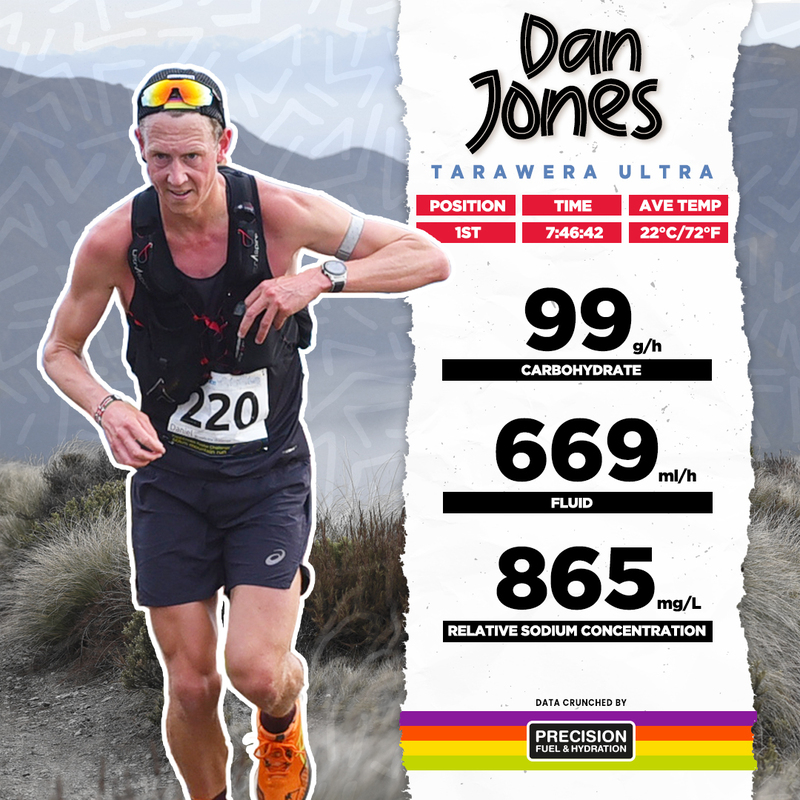You’ve been eating and sleeping well, dodging sneezes and washing your hands for the full alphabet song. But somehow, you still catch a cold. Even worse than feeling below par, is the inner turmoil of worrying about losing fitness if you don’t train during illness.
Making sensible choices when deciding whether to rest or train at times like this can be the key to long-term success, as Purple Patch Fitness Founder, Matt Dixon, knows all too well. Matt’s nickname - ‘The Recovery Coach’ - came at a price. He says his own pro career practically ended before it began due to overtraining and failing to embrace the recovery his body needed.
Now, as a coach, he’s learned the value of strategically taking a step back in order to continue moving forward in the bigger picture. Andy sat down with Matt to discuss the challenges of deciding whether to train or rest when you’re ill…
What’s your goal?
The first stage of the decision process is to take a step back, come out of the ‘weeds’ and refocus on what the goal of training is leading up to an event.
Matt says, “we’re applying a very specific stress (which is a training stress) to yield adaptations. When the body is under attack [from illness], there’s a colossal additional stress on top of it now, and the body needs all of its resources to fight and eradicate that.
“So the only value of training under sickness is if the body can positively adapt to the training stress and/or if the actual movement that you do can help push along and eradicate some of the symptoms and the illness. When you circulate the blood, sometimes that's a really positive thing.”
While this might make sense in theory, it can be trickier to make the actual decision when you’re coming down with sickness in the build-up to a race. Sometimes the situation is black and white where the objective measures make the decision for you (i.e. positive COVID test, strep throat or tonsillitis diagnosis, can’t get out of bed). On other occasions, there will be shades of grey where you feel ill and you’re not sure if it’s best to rest or train.
Should you train when you're ill?
To help you make a decision when you’re on the edge of resting or training, I consulted doctors and explored the scientific literature to identify three key considerations…
1. Neck check
Apparently, the neck is the turning point (🥁).
“If you have mild symptoms that are predominantly confined to the upper respiratory tract (i.e. sore throat, runny nose), it’s probably safe to continue exercising,” Cardiologist, Dr Robin Van Lingen, told us. “Although my advice would be to keep it to a moderate intensity at most.”
A typical viral illness - like the common cold which is more of an “above the neck” type of sickness - is going to have a relatively shorter recovery time and a lower risk of causing further harm, assuming you keep the movement moderate and short(er).
However, below the neck is a different story. These illnesses are more severe and pose a stronger threat to your overall health if you continue training normally. Respiratory symptoms, fever and gastrointestinal (GI) illness are examples of ones to watch out for.
If you have these, the doctors say to opt for complete rest and refrain from training until symptoms have subsided, as the illness is clearly more widespread in its effects on your body. You’re at a higher risk of injury and delaying your recovery time, and we all know that even a moderate injury can take you out of training for far longer than a two-day break.
Fever is a particularly nasty symptom that can interfere with training, due to its impact on hydration status.
Dr. Hunter Huston told me, “fever is a risk-factor for fluid loss as the body seeks to maintain a normal core temperature. This is why we sweat a lot with the flu.”
Just like heavy sweaters (and those sweating for a long period of time) are at greater risk of dehydration during exercise, the same applies to sweating during a fever.
“With this in mind, maintaining adequate intake is crucial to avoiding major losses for those who boast a particularly high sweat rate. For those who have a prolonged fever and who have a high sweat rate and sweat sodium concentration, adequate sodium replacement becomes a factor as well.”
2. Food and drugs
It’s worth considering any medication you’re taking for the illness. Medication might be masking a fever and making you feel better than you actually are, which could subsequently impact your decision-making.
Non-steroidal anti-inflammatory drugs (NSAIDs), like ibuprofen and aspirin, are common over-the-counter options, but the doctor says to be “somewhat heavy handed with fluid intake” when using them.
When you’re sick, it’s easy for hunger levels to drop in addition to thirst levels. It’s important to stay on top of your food and fluid intake during this time to give your body everything it needs for healing, as Dr Van Lingen notes:
“Any illness tends to make you more dehydrated through a combination of increased respiratory rate and raised body temperature. So remaining well hydrated during periods of illness is very important. You can also go off your food and change your oral intake, so ensuring you get the right electrolyte balance is important. This is particularly important if you have gut based symptoms such as diarrhoea or vomiting.”
Overall calorie intake doesn’t need to go in the tank just because you feel more sedentary than normal either.
Emergency room doctor, Jeffrey Sankoff, told Triathlete.com: “No matter how motivated you are to train and how much you think it’s important to soldier on through your malady, the reality is that the immune system commandeers a variety of resources across organ systems – and all of those systems require energy.”
A pro athlete’s approach
Elite ultrarunner Dan Jones encountered a bout of COVID close to his Tarawera 102k race. Not exactly the best time to be feeling sick!
In his Substack, Dan explained that whilst he didn’t want to stop training so close to his race, he really didn’t want to risk long COVID. So he was appropriately careful with returning to training, as he knew the latter would impact his race more than taking a couple of days off.
While he came close to 10 days of no running (which is when we start to see a loss of endurance), he was diligent in monitoring his heart rate variability daily and waited until it started to improve before training again.
He also added heat stress with a sauna and monitored his heart rate on his first run back (which occurred on day eight). And even during this return-to-run, he backed off his pace when he saw his heart rate creeping up later in the run.
He went on to nail his race day and win the Tarawera Ultra…

3. Dealing with a long illness
While Dan enjoyed a relatively quick recovery, some athletes may have a longer lay-off. Dr. John Hellemans told Gordo Byrn that even a viral illness with a fever can produce more subtle effects that pop up after an individual feels “seemingly recovered from their illness and back to normal training, only to bomb out or feel very flat in the race” as there might be “subtle after effects from the illness still present, probably at a cellular (metabolic) level.”
On the subject of longer illness, myocarditis has made headlines in recent years. Dr Van Lingen explains that it’s a condition where your heart muscle is severely affected by a virus.
“This can be life-threatening and all exercise needs to stop until it has resolved. It will require specialist cardiology review and management with special tests like ECG, echo and MRI scans. You will usually feel very poorly with myocarditis with chest pain and shortness of breath on exertion. It will usually take at least 3-4 months to recover from this and you will need to get the all-clear from a cardiologist before you can start exercising again.”
As Gordo Byrn notes in his Endurance Essentials Substack, “given that endurance athletes are higher risk for atrial fibrillation, managing heart stress (after viral infection) seems wise.”
How to approach rest
Many athletes worry that the ‘detraining effect’ will negatively impact their fitness if they take time off training. But it takes more than a day or two away from training to lose fitness. (And even if you do have to take some extended time off, regaining your fitness is easier as a trained individual).
To put it into perspective, taking rest days when you're sick might cause you to forgo a few days of training. But not taking those rest days may increase your likelihood of a major illness, which will further set you back. The best thing you can do once you’re already feeling sick is to mitigate the effects, which usually means playing it a little safe. Dr. John Hellemans notes that “by backing off quickly, the illness remains minor and I can do light activity.”
He calls it “recovery on demand” which translates to “back off early” at the initial signs of a minor illness.
Easier said than done
As Matt Dixon says, “it takes courage to recover.” Even in the weeks leading up to a big race, fitness doesn’t evaporate overnight. Many athletes are often hyper-focused on the final eight weeks in the lead up to an event.
But Matt says, “consistency is the magic word of performance for a reason. You build [fitness] over months and months and months.” Building a “reservoir of readiness” takes time and isn’t drained from a few days of letting your body recover from the physiological stress of an illness.
The moral of the story is that ‘powering through’ doesn’t necessarily make you powerful – it’s the recharge that gives you strength.
Back in the game
The goal is to be able to return to sport as soon as you can, and Dr Van Lingen says this is doable if your symptoms are subsiding and you don’t jump in at the deep end.
“If the illness is short lived and the symptoms subside quickly, then normal physical activity can be rapidly resumed. Although I would advise starting with a low-to-moderate intensity workout until you're completely well.”
Andy asked Matt what he’d tell an athlete who wakes up ill but has a three-hour ride scheduled with intervals.
“It doesn’t matter whether you’re just sniffly or you have a fever – nine times out of 10 the original training program isn’t going to be suitable. Can the body yield the positive adaptations of why you’re doing that ride? Most likely not. But, what you might do is adapt that training program to enable a continuation of exercise to help facilitate recovery.”
As much as it might sting to hear, it’s not the time for a key workout. Instead, it’s time for proactive recovery and a reminder that retreating from the original plan is actually an investment.
Rest or train? A 5-step approach
So, if you’re feeling sick, ask yourself:
- Are the symptoms above or below the neck?
- Do I have a fever?
If you answered “above” and “no”...
- Is there a lower intensity version of my training I can do just to be moving?
- Can I back off early and re-evaluate tomorrow?
If you answered “below” and/or “yes”...
- How can I recover bravely?
And then go eat, drink and sleep. Don’t fret – just rest.
I’ll leave you with a few more words from Matt to keep in mind when the sniffles come knocking: “The body’s an amazing, adaptive machine, and it’s adaptive to illness, as well. So, as long as you’re smart, you can emerge better.”
